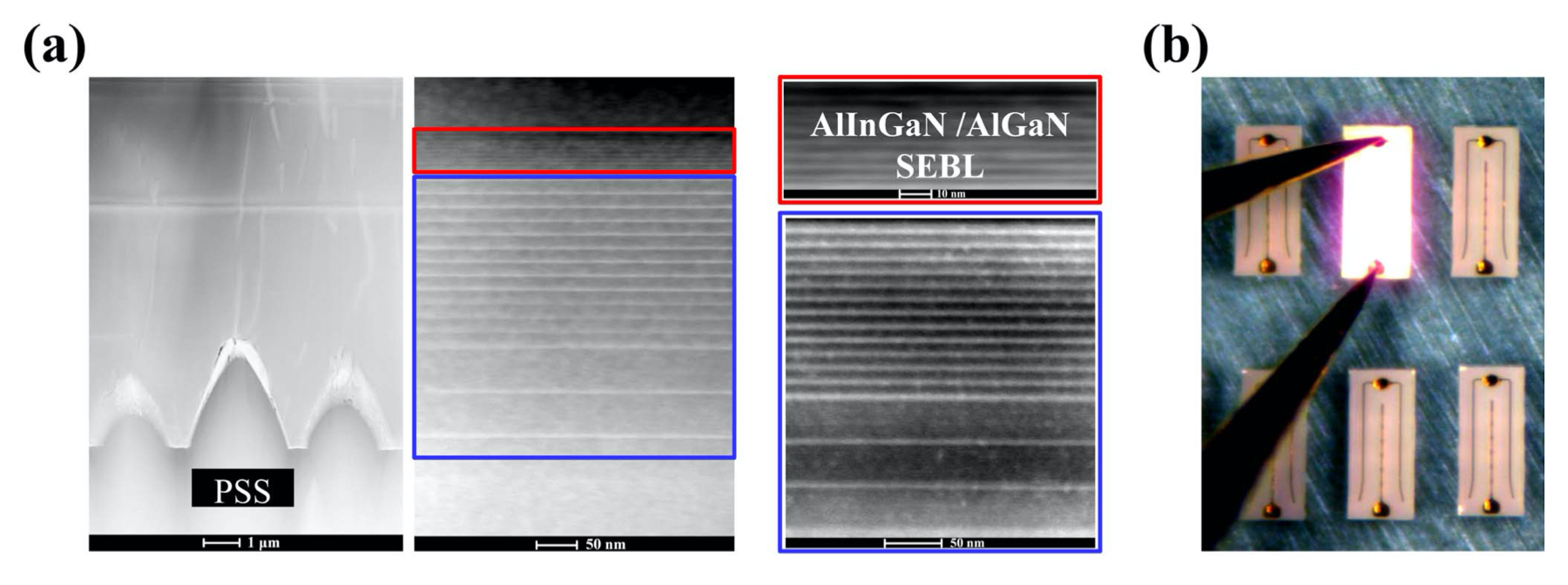
WHU team shows improved quantum efficiency of UV LEDs by introducing AlInGaN/AlGaN superlattice electron blocking layer (SEBL)
A research team led by Shengjun Zhou at Wuhan University has reported a special design of electron blocking layer (EBL) to improve the efficiency of ultraviolet light-emitting diodes (UV LEDs). They proposed an AlInGaN/AlGaN superlattice electron blocking layer (SEBL) to boost quantum efficiency of ~371 nm UV LEDs.
The UV LEDs have gained growing interest for tremendous applications, such as lithography, medical curing, 3D printing, gas sensing, plant lighting, and pumping sources of white LEDs. However, the relatively lower quantum efficiency of UV LEDs hinders their further widespread usage, compared with the visible counterparts.
The researchers have demonstrated that the introduction of AlInGaN/AlGaN SEBL can achieve high-efficiency UV LEDs by energy band modulation. The less tilted energy band of quantum wells due to strain relaxation effect of SEBL can mitigate the separation of carrier wave functions. The increased effective barrier height for electrons and notches in the conduction band of SEBL will effectively suppress the electron leakage.
Furthermore, the spikes in the valance band of SEBL can attract holes, thereby facilitating hole injection into the active region. Benefitting from these significant advantages, the UV LED with AlInGaN/AlGaN SEBL exhibits a 21 percent higher light output power and smaller forward voltage, as compared to the UV LED with AlInGaN EBL.
The pictures above show (a) Cross-sectional TEM images of UV LEDs structure. (b) EL image of UV LED chip at 60 mA.
‘Rational superlattice electron blocking layer design for boosting the quantum efficiency of 371 nm ultraviolet light-emitting diodes' by Peng Du et al, IEEE Transactions on Electron Devices, 2021, doi: 10.1109/TED.2021.3118990.












